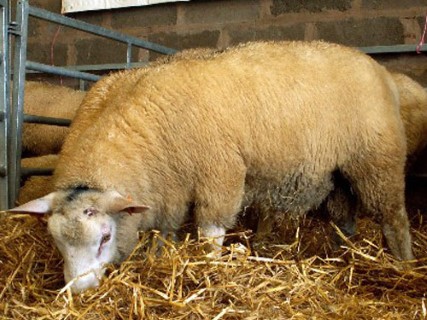Meatlinc Sheep, a distinguished British breed falling into the terminal sire category, emerged from a meticulous breeding program initiated by Henry Fell in 1963. The breed's foundation was laid upon a careful selection process, initially comprising individuals from five distinct breeds—two British and three French. Over the years, this program evolved through rigorous performance recording conducted under stringent commercial conditions, resulting in the development of the Meatlinc breed.
Notably, the Meatlinc breed's development was marked by a deliberate decision to close its genetic pool in 1975, prohibiting the introduction of any external genetic material thereafter. This strategic move ensured the preservation of the breed's purity and facilitated the attainment of recognizable uniformity in its characteristics.
Meatlinc Sheep are renowned for their substantial size, ranking among the largest of the British sheep breeds. A mature ram of this breed can weigh an impressive 140 kg (over 300 lbs), reflecting its robust physique and formidable stature. Their distinctive features include a white face and tight wool, characterized by exceptional length and density, particularly evident in the hindquarters.
The breed's emphasis on performance under commercial conditions underscores its suitability for meat production, making Meatlinc Sheep highly valued within the agricultural sector. With their well-defined characteristics and consistent performance, Meatlinc Sheep stand as a testament to the success of selective breeding programs aimed at enhancing the productivity and quality of British livestock.
